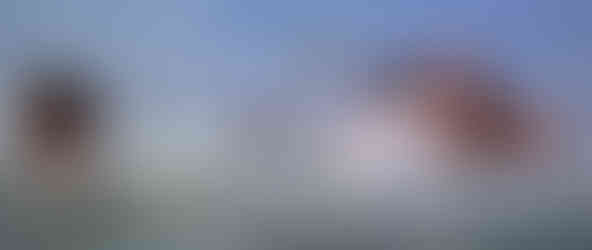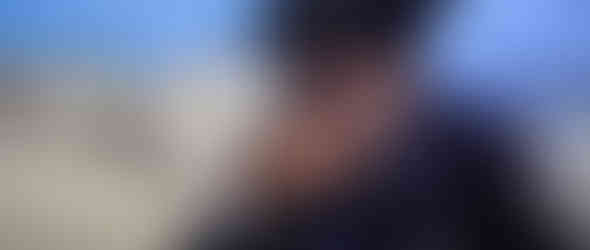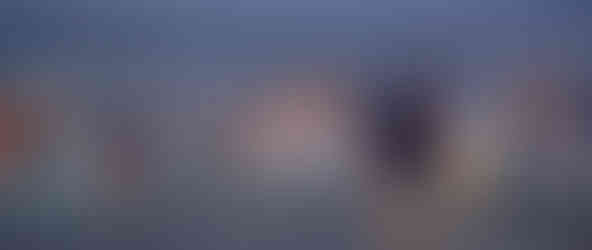“Jaws” sinks its teeth into 4K Ultra HD
- Bill Kelley III

- May 24, 2020
- 6 min read
Updated: Jun 21, 2025
4K ULTRA HD REVIEW / HDR FRAME SHOTS
The beaches of Amity Island are terrorized by a 24-foot great white shark.
(Click an image to scroll the larger versions)
“JAWS: 45th ANNIVERSARY EDITION”
4K Ultra HD, Blu-ray and Digital copy; 1975; PG for violence, profanity, and brief nudity; streaming via Amazon Video Prime (4K), Apple TV (4K), Movies Anywhere (4K), Vudu (4K), YouTube (4K)
Best extra: A two-hour documentary, "The Shark is Still Working: The Impact & Legacy of 'Jaws,'" narrated by Roy Scheider
THE SUMMER of 1975 didn’t have much to offer until late June. Everything changed when I arrived at the movies with friends to find several thousand lined up at the grand old 800-seat Capitol Theater in Charleston, West Virginia. We were all hoping to see the movie reported to terrorize young and old. It took two hours to get our tickets and seats in the front-row balcony.
Lights dimmed and the now-iconic theme began: Da-dun. Da-dun. Da-dun! For the next 120 minutes, we all held onto our seats while screams echoed throughout the room.
A new star had arrived in the shape of a 24-foot great white shark. Hollywood’s first summer blockbuster was born, changing filmmaking – and swimming – forever!
(1) A summer beach party. (2) Two college students decide to go for a night swim. (3) The terror. (4) Finding the remains of the female swimmer.
VIDEO
Let’s cut to the chase; the new 4K Ultra HD disc of “Jaws” looks spectacular, with perfect film grain, expanded contrast levels, and a much wider color palette.
The 4K master was actually created nearly a decade ago, during Universal Studios’ 100th-anniversary restoration project in 2012. At that time, the negative (2.35:1 aspect ratio) was given a liquid bath before it was scanned to create a new 4K restoration. Happily, there were no sharks around to eat the negative, just a team of brilliant technical artists to put the edge back on the classic adventure.
Steven Spielberg’s first masterpiece was dipped into a special brew to erase scratches. The solution minimized visual damage – which was extensive in sections – as each frame was immersed, then digitally captured while still wet. “The negative was in pretty crummy condition,” Spielberg says in the featurette carried over from the restoration project.
After the scan, a digital colorist wizard examined every frame, taking up to three-to-four hours on each one, removing blemishes to reconstruct the picture, then adjusting color, brightness, and contrast. Back in 2012, Spielberg said, “The image on a really good HDTV looks better than the film looked when first projected in 1975.” Imagine how much better it looks on a 4K setup with HDR.
The second round of restoration used on this new presentation produced three HDR gradings, a standard HDR10, the more advanced Dolby Vision, and an HDR10+. Overall contrast levels are far more dynamic with deeper blacks and controlled highlights – seen when the first victim goes for a swim in the opening sequence. The sun is setting behind her, and the fireball is more defined with the surrounding clouds. It’s the same when the underwater camera – with the Great White’s point of view – follows her silhouette movement against the surface of the water.
(1) Amity town leaders meet Chief Martin Brody (Roy Scheider) about his orders to close the beaches. (2) Brody keeps a watchful eye on the water. (3) Spielberg uses the “dolly zoom” technique first used by Hitchcock during “Vertigo,” as Brody witnesses the attack of the little boy swimming with a raft. (4&5) Everyone rushes from the water, while the remains of Alex Kintner's raft washes ashore.
Spielberg and cinematographer Bill Butler framed much of “Jaws” with a wide-shot perspective, so the added resolution and more defined film grain makes every element from the foreground to the background, have an extra level of clarity. It’s easy to see in the first daylight scene when Chief Brody (the late Roy Scheider) and his wife Ellen (Lorraine Gary) are getting out of bed. The camera frames their cocker spaniel on the left side of the bed, with Brody behind the dog, and Ellen on the right on her pillow. Through the window, we see the ocean as the camera pans following Brody moving across the room to look for their two sons outside. Everything is razor-sharp. We get the same wide viewpoint when oldest son Michael (Chris Rebello) enters the kitchen after cutting his hand. As the phone rings, there’s another wide-shot as Brody moves toward it and the full kitchen is seen in the background. At that point the camera focus narrows, directed at Brody as he hears about a body found on the beach.
You won't forget the famous “dolly zoom” shot at the beach, when Brody witnesses the shark attack of the little boy on the raft. The technique was first applied by Hitchcock during “Vertigo” to simulate dizziness. Here the camera dollies toward Brody, while the lens zooms to change the angle of view. Wow - what an experience in 4K!
AUDIO
There’s a new Dolby Atmos eight-channel up-mix soundtrack created from the original analogue mono track. This forced sound engineers to insert new background and sound effects, giving the Oscar-winning soundtrack a more active soundstage, moving elements from left to right, front to back, and from ceiling to the floor.
John Williams’ Oscar-winning score still drives the suspense, raising goosebumps with its menacing opening. This edition gives the soundstage a tad more envelopment, with the active height speakers and responsive bass. But for the purist, Universal also provides an uncompressed mono track.
During the restoration, the studio also created a new 35mm film negative from the 4K master. “This is our cultural heritage,” Spielberg says. “It’s very important to preserve the physical film.” Properly stored, Universal expects the remastered negative to last 100-plus years, says vice president of Content Management and Technical Services, Peter Schade.
(1) Fisherman Sam Quint (Robert Shaw) says the $3,000 bounty on the shark isn't enough. (2) Members of the city council and Chief Brody listen to Quint's offer. (3) Two local fishermen attempt to catch the great white. (4) Chief Brody views a book on sharks as the pages reflect in his glasses. (5) Marine Biologist Matt Hooper (Richard Dreyfuss) examines the remains of the first victim. (6) Mrs. Kintner (Lee Fierro) the mother of the little boy killed by the shark confronts Chief Brody. (7) Mayor Larry Vaughn (Murray Hamilton) wants the beaches open for July 4th.
EXTRAS
The 4K disc also includes over three hours of bonus features detailing how “Jaws” changed Hollywood. By the following year, the frenzy surrounding “Jaws” not only created a new movie genre, but changed how motion pictures were marketed and merchandised for action-oriented summer movie seasons.
The documentaries provide dozens of compelling interviews, including one with author Peter Benchley, who was stunned at how readers swarmed to his fish story. Still, most of the interviews center on the film’s lead creature, an unruly, 12-ton hydraulic shark that worked only sporadically. Most of the time, Spielberg used smoke and mirrors to achieve suspense and scares. “We were all groping in the dark for a way to tell the story because the shark wasn't working,” he explains.
With only one theatrical film under his belt, “Sugarland Express,” Spielberg insisted “Jaws” had to be shot on the ocean. “We all gained a tremendous respect for the sea, for nature, for currents and tides, for waves, for rain and sun and overexposure to both,” he recalls. Originally planned as an eight-week production, filming took months. “We thought we were gonna be there for the rest of our lives,” Scheider recalls.
Spielberg acknowledges the continual struggles: “When I think of ‘Jaws,’ I think of a period in my life when I was younger and more courageous or more stupid.” He also recounts his favorite scene, when Robert Shaw as Quint gives his monologue about the men of USS Indianapolis, who downed in shark-infested waters after a Japanese torpedo hit the battleship.
The set also includes a 44-page booklet, pretty much a duplicate of the digibook from 2012, which included introductions, rare photos, cast bios, storyboards, and blueprints for the shark. There are also deleted scenes and outtakes on the 4K, though only shown in HD.
“Jaws” received four Academy Awards nominations including Best Picture, and won for Best Film Editing, Best Sound, and Best Music. Plus, its worldwide gross topped $470 million.
Spielberg and Universal can take pride in this one!
― Bill Kelley III, High-Def Watch producer
(1) The shark finally shows its face at the 59-minute mark, as it attacks a man riding a small sailboat. (2) Chief Brody's son Michael is in shock after witnessing the attack. (3&4) Fisherman Sam Quint (Robert Shaw), Matt Hooper and Chief Brody prepare to take on the shark.
(1) "You're going to need a bigger boat," was improvised by Roy Scheider. (2-3) Onboard the Orca shark fishing boat as the three guys tell stories and witness a meteor shower on the open waters off Martha's Vineyard.
































































Comments